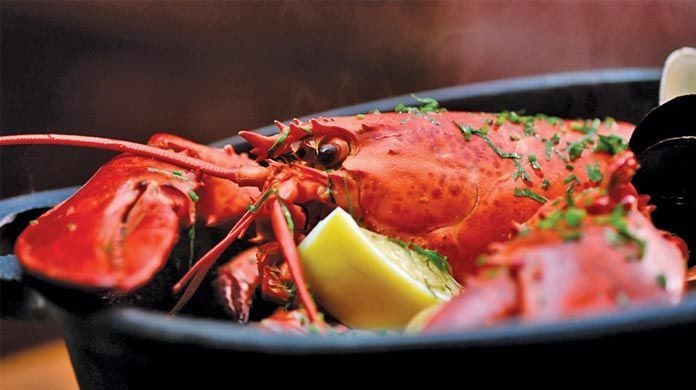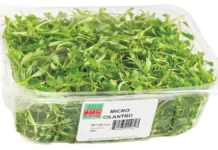
In business since 1974, New York City mainstay The Lobster Place offers the largest selection of seafood on the East Coast. The Lobster Place makes it a priority to deliver the freshest, highest-quality seafood to the most discerning restaurants and markets.
Total Food Service sat down with Ian McGregor, CEO of The Lobster Place, to talk about how a restaurant or foodservice operation should approach the seafood market, and shares what you need to know about sourcing seafood.
What’s the first step for a restaurant looking to set up a program for the selection and purchasing of fish?
Ask for a sales rep to come out and visit your kitchen to review your menu so she can understand your cuisine, menu applications, and service needs (i.e. delivery time, etc.). With that information in hand, she should be able to recommend different types and species of seafood that can achieve your needs in terms of availability, price, etc.
Traditionally, the only way to buy fish was for the chef to go to the Fulton Fish market every morning. Where are we today with sourcing seafood?
Fortunately, those days are behind us. Advances in logistics and the evolution of the fresh seafood business means that a company like The Lobster Place sources its products from the same places that the Fulton Fishmongers do, and we offer the added convenience of processing filets to order, twice daily deliveries, and 24-hour customer service. Of course, nothing can replace the trust that’s build when a customer and vendor meet face to face – so you should ask to visit your fishmonger’s plant. See their approach to food safety, sanitation, and product handling – it will tell you a lot about what you’re dealing with.
There are those that say it all begins with understanding how to evaluate a whole fish. How is seafood different from beef in which many cases the full steer is sourced?
Different species have different tell tale signs as to freshness. You can check the clarity of the eyes on a Black Sea Bass, or check the freshness of the gills on a salmon, but those tactics are not predictive for every type of fish. Recognizing that some fish have tender flesh (like Cod), while others are more firm (like Striped Bass), look for a nice firm feel on the outside of the fish. If you press two fingers against the flesh, they shouldn’t leave an indentation. Look for a bright, shiny hue to the skin….fish that’s past its prime will be dull and soft.
What can be learned from proper inspection of: Gills, Scales, Cracks/Breaks, Fins?
- Gills: Fresh smelling/bloody gills can be an indication of freshness. But some fish gills always have a strong aroma – like Red Snapper.
- Scales: Skin that’s lost a lot of scales may mean the fish was handled without a gentle touch by the fisherman, the trucker, the fishmonger, or all of the above.
- Cracks/breaks: It depends on the species and the reason. If it’s dry and cracked – that’s a bad thing. If you’re looking for a 100lb. tuna and there’s a crack in the skin, it may just be where it was gaffed.
- Fins: There are no hard and fast rules but if fins are deteriorating, it’s not a big leap to assume the rest of the fish is too.
What does a restaurant’s chef or purchasing agent know about butchered or filleted options?
Some fishmongers, like The Lobster Place, will filet your fish to order in just about anyway you’d like them to. Skin On, Skin Off, Butterflied, Pin Bones Out, Frenched, V-Cut – you name it. An important concept to really understand though is whether you’re billed for the gross weight of the whole fish before its fileted – or if you’re only being billed for the net weight of the meat after its filleted. In this business, chefs tend to be focused on price per pound as the indicator of value when they buy fish. But remember – the price is only one component of the total that you pay – the other is the quantity. If you ask to be billed for the gross weight of the fish, your price per pound is lower but you have to buy more pounds (the head, tail, guts, etc.) If you ask to be billed for the net weight of the fish, your price per pound can be significantly higher, but you’re not paying for waste so the total amount you pay will be the same – if your fishmonger is honest. When paying gross weight prices, insist that your fishmonger send the bones and scraps with your order. Weigh them along with the filet so you know you’re paying for the right quantity of fish.
What are the keys in understanding the economics of seafood on a menu?
You can’t have filet mignon appetite with a Big Mac budget. Wild fish is expensive to catch, transport, process, and deliver so it’s going to be expensive to put on your plate. Farmed fish – and there are some fantastic farmed options – tends to be less expensive on a per pound basis. You need to design your menu accordingly. I talk to restaurateurs that say, “I maintain a 24% food cost!!!” That may be true across your entire menu – but you’re never going to achieve it by having 24% cost on every single dish. You may be able to achieve that with a Salmon or Mussel dish – which is great, you’ll sell a lot of those. But, you’re going to have a hard time getting costs that low on a more expensive fish like Tuna or Halibut. You need to have realistic expectations and balance margins across your menu.
What advice do you have for the creation of a seafood menu?
First things first – you have to know and trust your fishmonger and have a relationship based on communication. If nothing else, seafood is the most dynamic protein. Price and availabilities are always in flux. Generally speaking, aquaculture items like Bronzini, Salmon, Oysters, and Mussels and frozen items like White Shrimp, Octopus, and Squid will be the most consistent price and availability-wise. Wild and seasonal items like Striped Bass, Tuna, Mahi Mahi, Red Snapper, and Cod can be harder to predict. Give your fishmonger some latitude to help chose menu substitutes for you – because there will always be times when certain fish just aren’t biting.
What are the pros and cons of these different sources for seafood supply?
- Broadliners (Sysco/US Foods etc.) can be strong in some frozen foods, but typically fresh cut to order fish is not their forte. Also, they typically have very large order minimums and early cutoff times.
- Seafood Specialists: The Lobster Place is a full service seafood purveyor. We’ve spent 40+ years building relationships with fresh and frozen seafood sources around the world; we process your order in a pristine facility that knows how to handle fish; our trucks make two daily deliveries and you can order as late as 3am for delivery by lunch service; our team of fish mongers is standing by from 6am to midnight to speak to you IN PERSON. We make our living focused on seafood and seafood only – you can’t go wrong with a specialist.
To learn more about sourcing seafood with The Lobster Place, visit their website.























